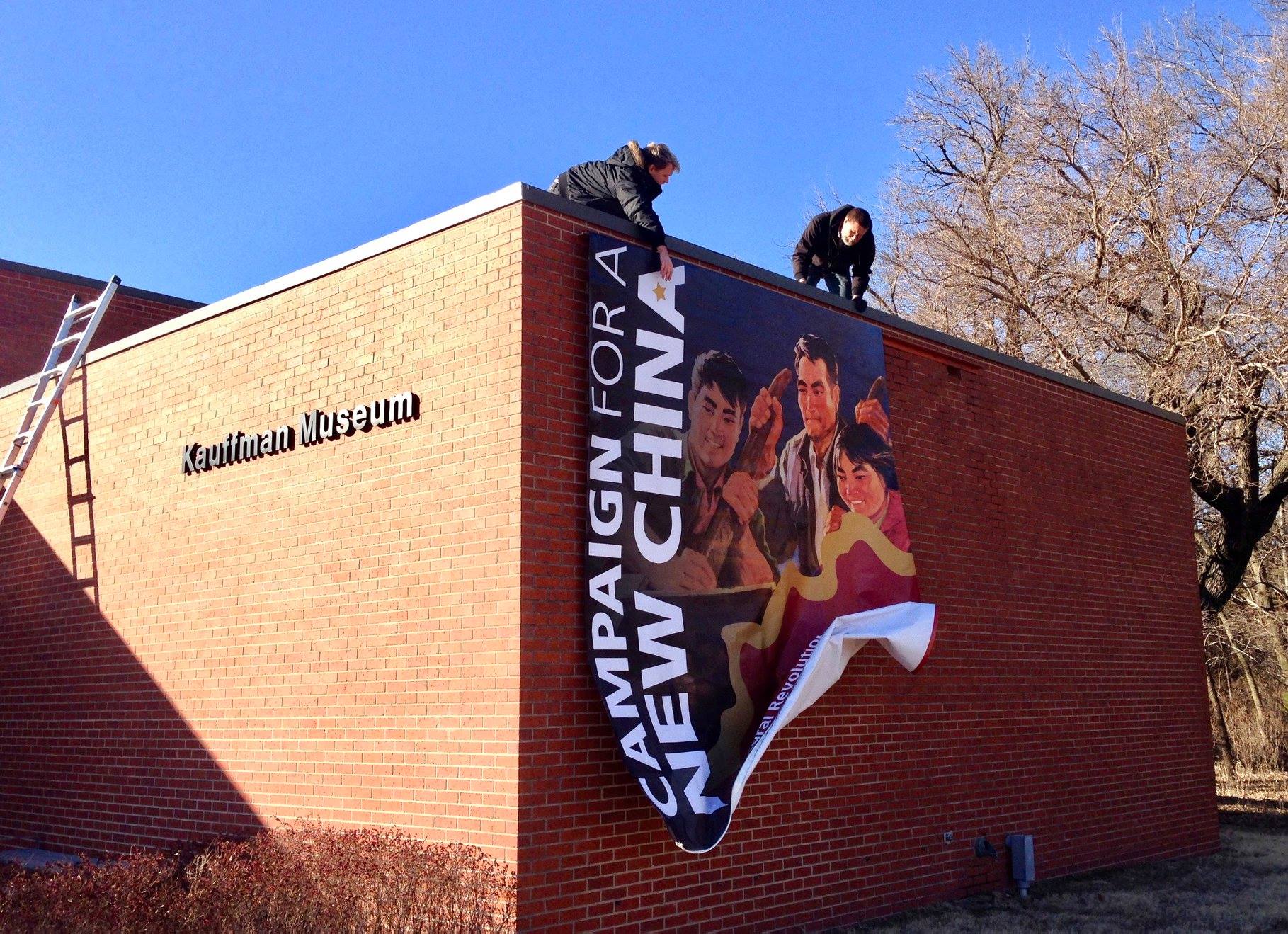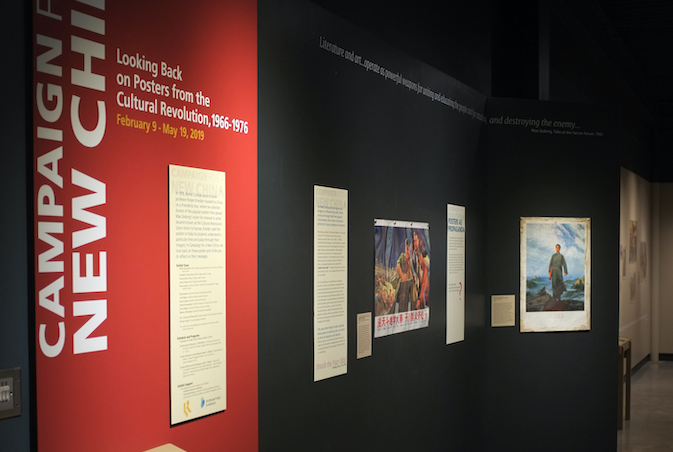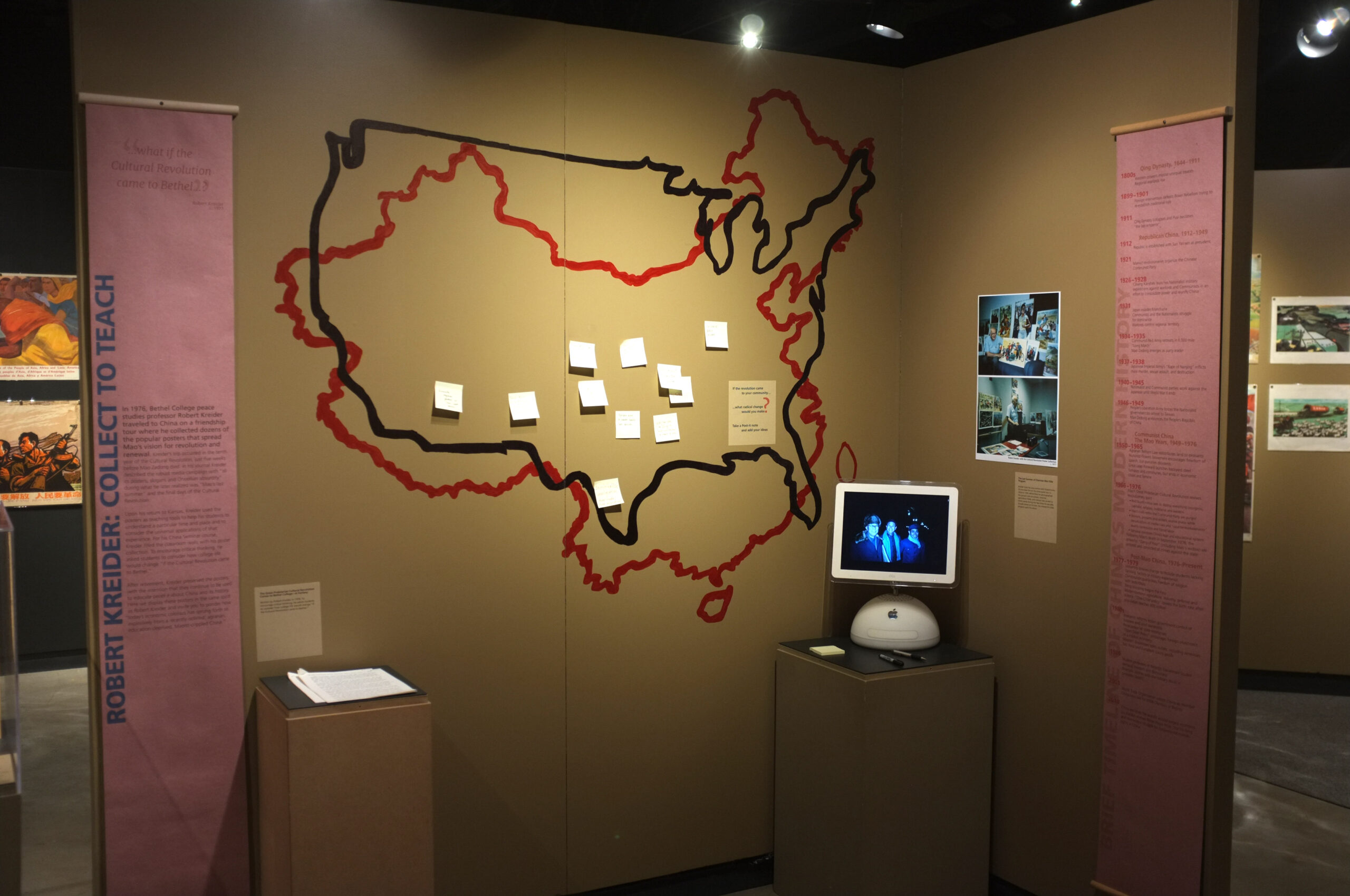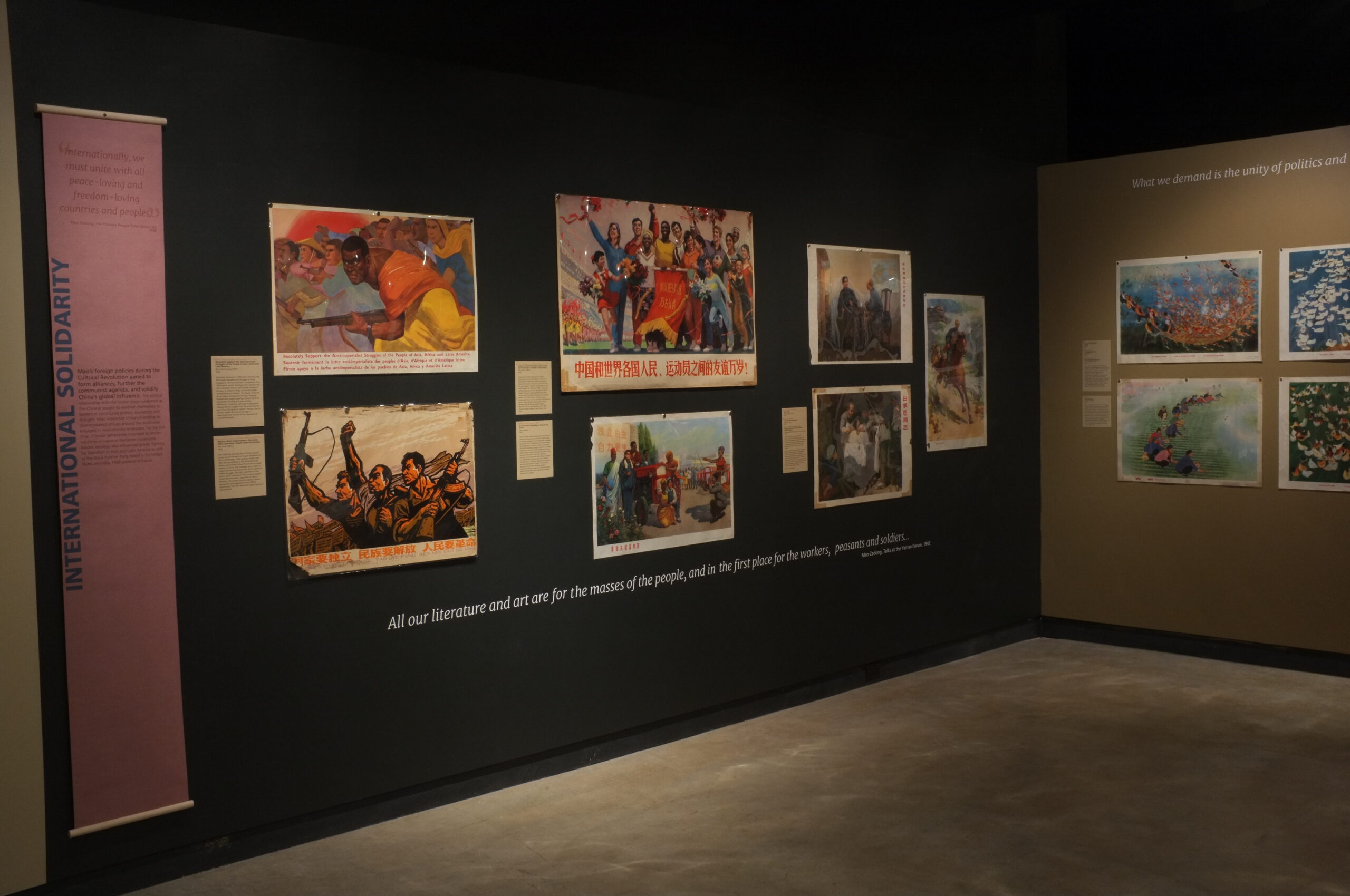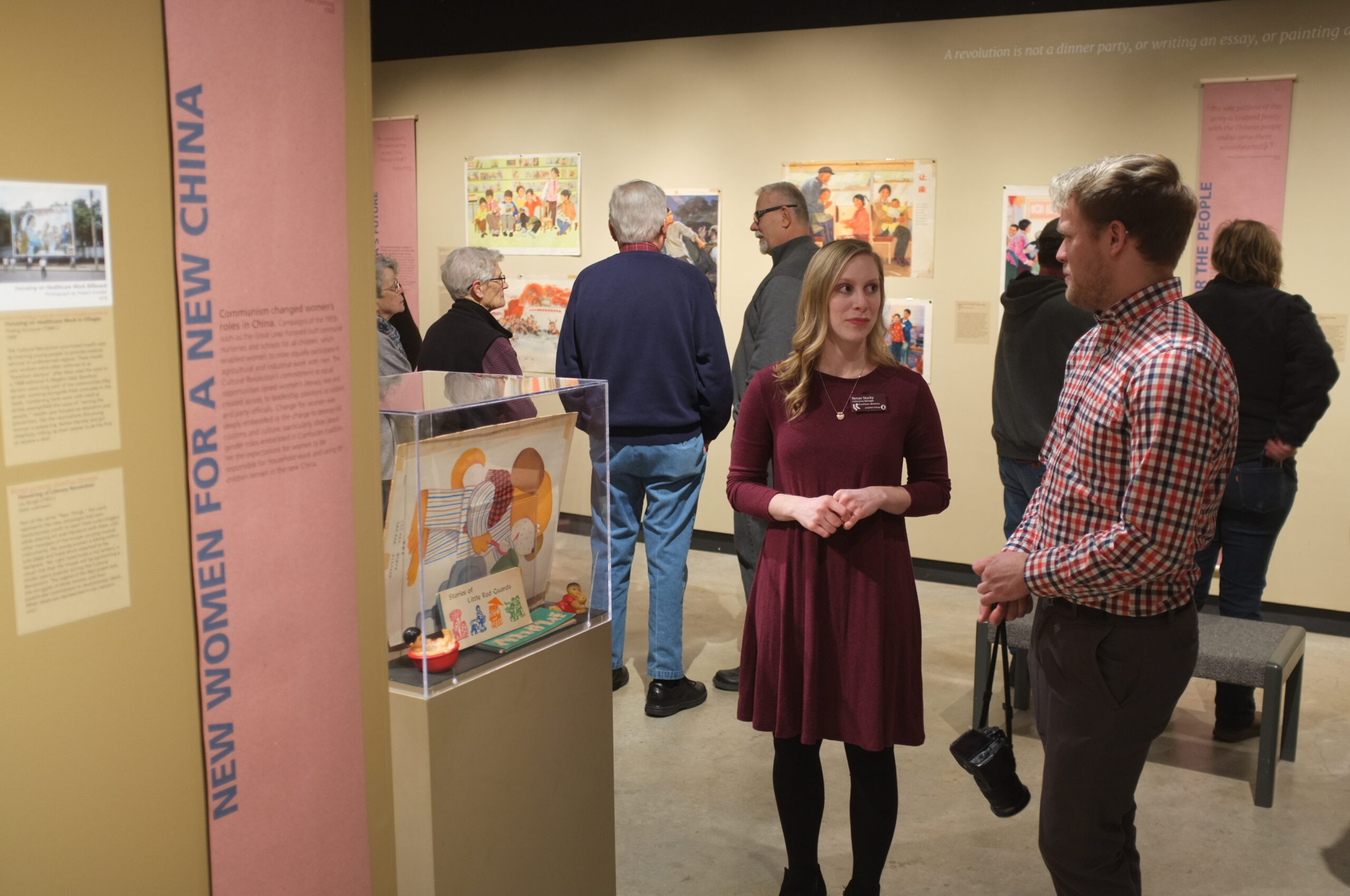
Campaign for a New China is currently being developed as a traveling exhibition. For information about booking this exhibition, contact Chuck Regier, Curator of Exhibits.
Literature and art… operate as powerful weapons for uniting and educating the people and for attacking and destroying the enemy…”
Mao Zedong
Talks at the Ya’an Forum, 1942
In 1966, Chinese Communist Party chairman Mao Zedong launched the Great Proletarian Cultural Revolution, a radical movement to be led by workers and youth to purge the country of corruption, elitism, and capitalist tendencies. Mao believed in the revolutionary potential of art and enlisted artists to promote Communist ideals through paintings and prints, many of which were reproduced and distributed as posters. Plastered on street corners and in schools, shops, factories, and homes, Cultural Revolution posters testify to the comprehensive nature of Mao’s campaign by addressing topics such as rural development, community health, gender equality, and the importance of a true Communist education. All Chinese citizens received and were expected to learn from these visual messages. Over 50 years later, we look back on a collection of these posters and reconsider the campaign for a New China.

EXHIBIT THEMES

Campaign for a New China features 51 posters, a portfolio of small-format Huxian Peasant Paintings, and woven portraits of Mao Zedong, Josef Stalin, Vladimir I. Lenin, Friedrich Engels, and Karl Marx. The exhibition narrative includes panels that introduce the Cultural Revolution and propaganda art. Poster captions include the title in Pinyin and English, artist name with birth-death years, year of production, and an interpretive paragraph.
Section and interpretive texts employ “directed looking” language to engage visitors and promote a spirit of inquiry by pointing them to significant details (e.g., How many different education materials do you see in this poster?) and by posing questions that connect to their own experience and encourage them to construct their own meanings (e.g., Would this idyllic vision of collective agriculture appeal to North American farmers?).
EXHIBIT GALLERY
BACKGROUND
This exhibition was a collaborative venture between Bethel College and Kauffman Museum.
Exhibit Support
- Kauffman Museum Association
- Humanities Kansas, a nonprofit cultural organization connecting communities with history, traditions, and ideas to strengthen civic life
Exhibit Team
- Rachel Epp Buller, Bethel College associate professor of visual arts and design: lead curator
- Elizabeth Friesen Birky: Bethel College student curator
- Emma Girton: Bethel College student curator
- Austin Prouty: Bethel College student designer
- Renae Stucky: Kauffman Museum collections manager/Bethel College student curator
- Elsie Deckert: Kauffman Museum photography assistant
Exhibit Team Continued
- Coel Ediger: Kauffman Museum exhibit assistant
- David Kreider: Kauffman Museum technician
- Rachel Pannabecker: Kauffman Museum curatorial liaison & editor
- Chuck Regier: Kauffman Museum curator of exhibits
- Weldon Schloneger: Kauffman Museum photographer
-
Kris I. Ercums and Pinyan Zhu: Spencer Museum of Art curatorial consultants
-
Zhuojun Jiang: Chinese language consultant
- The exhibit team acknowledges the contributions of those who wish to remain anonymous.
AWARDS
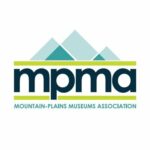
2019 Publication Design Award
Mountain Plains Museum Association

2019 Award of Excellence
Kansas Museums Association
VISIT US
27th and North Main St.
North Newton, KS 67117
Across from the main campus of
Bethel College
CONTACT US
(316) 283-1612
kauffman@bethelks.edu
Mailing address:
300 E. 27th Street
North Newton, KS, 67117-1716
HOURS
Tue-Fri 9:30am-4:30pm
Sat-Sun 1:30pm-4:30pm
Closed Mondays and
Major Holidays
9:30am-1:30 pm Christmas Eve and New Years Eve

